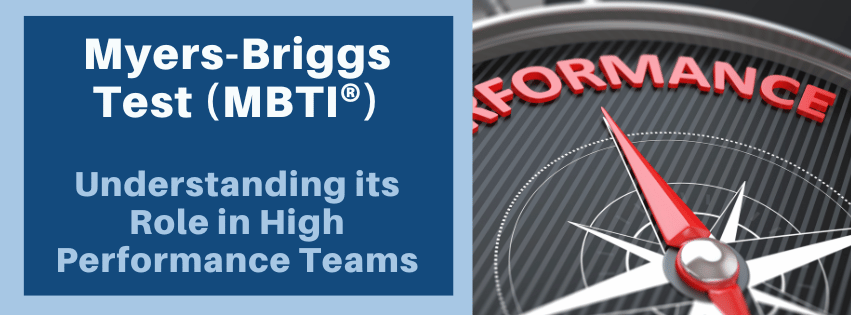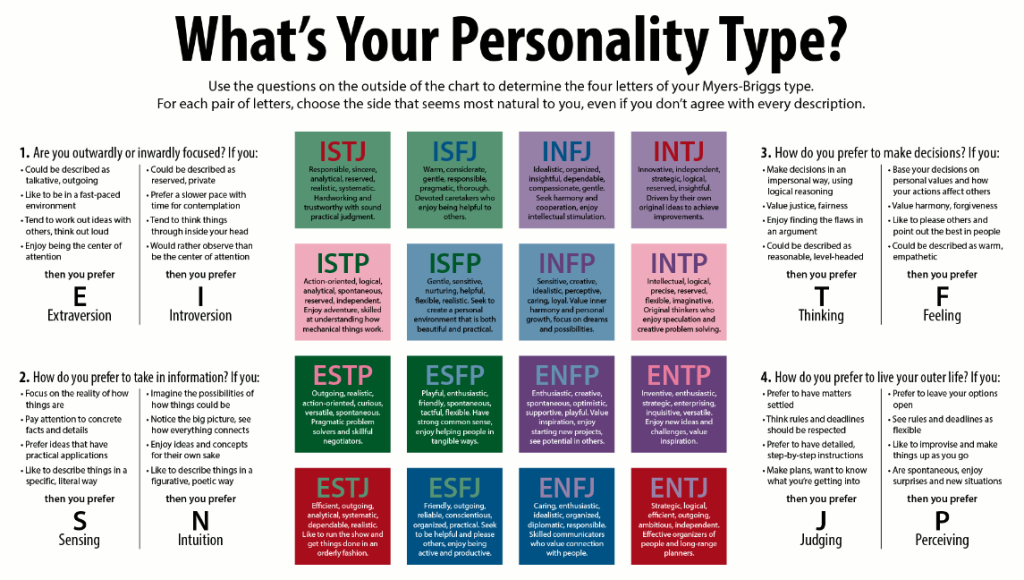
In the realm of team performance and dynamics, few tools are as widely recognized and utilized as the test often referred to as ‘Myers & Briggs’. However, its official name is the Myers-Briggs Type Indicator® (MBTI®), a term coined by Isabel Briggs Myers and her mother, Katharine Briggs.
This psychological tool, grounded in the theory of psychological types described by C. G. Jung, has become a cornerstone in many organizations worldwide. It provides valuable insights into individual preferences and team interactions, helping to make sense of the seemingly random variation in behavior by identifying basic differences in the ways individuals prefer to use their perception and judgment. For more detailed information about the MBTI, you can visit the official Myers-Briggs website.
Essentials of the Myers-Briggs Test
The Myers-Briggs test is a self-report questionnaire that classifies individuals into one of 16 unique personality types. These types are identified based on four dichotomies: Extraversion (E) vs. Introversion (I), Sensing (S) vs. Intuition (N), Thinking (T) vs. Feeling (F), and Judging (J) vs. Perceiving (P). Each personality type is represented by a four-letter code, such as ENFP or ISTJ, which signifies an individual’s preferences in each of the four dichotomies.
In the Myers-Briggs test, these four dichotomies combine to create 16 unique personality types, each represented by a four-letter code. The following graphic provides a quick overview of these personality types and their key characteristics:

This work: A chart with descriptions of each Myers–Briggs personality type and the four dichotomies central to the theory, by Jake Beech, is used unchanged under CC By-SA 3.0.
By understanding these personality types, teams can gain valuable insights into their dynamics and work more effectively together.
Key Attributes of High-Performing Teams
High-performing teams exhibit a number of key attributes that set them apart:
- Effective Communication: High-performing teams have clear, open, and transparent communication. Team members feel comfortable expressing their ideas, opinions, and feelings to each other.
- Self-Awareness: Members of high-performing teams are aware of their own strengths and weaknesses, and they understand how their actions affect others in the team.
- Diversity and Collaboration: High-performing teams value diversity and leverage the different skills, perspectives, and experiences of their members. They collaborate effectively to achieve common goals.
- Conflict Resolution: High-performing teams are able to manage and resolve conflicts in a constructive manner. They see conflict as an opportunity for growth and improvement.
- Effective Leadership: Leaders of high-performing teams understand and cater to the needs of their team members. They foster a supportive environment that encourages growth and achievement.
RELATED: How to Build High Performing Teams
How the Myers-Briggs Test Enhances These Attributes
The Myers-Briggs test operates on the premise that we all have specific preferences in the way we construe our experiences. It uses a series of questions to identify a person’s preferred way of thinking and behaving across the four dichotomies mentioned above. Each individual is said to have a natural preference that leans towards one side of each scale, creating the 16 possible personality types.
The MBTI test offers several benefits to teams:
- Facilitating Effective Communication: The Myers-Briggs helps team members understand each other’s communication styles. For example, if a team member is highly extroverted, they may prefer to communicate their ideas verbally and in group settings, while an introverted team member may prefer to communicate their ideas in writing or one-on-one. By understanding these communication preferences, team members can adjust their own communication style to better suit the preferences of their colleagues, leading to more effective communication and fewer misunderstandings.
- Promoting Increased Self-Awareness: The MBTI helps team members become more self-aware. By understanding their own personality type and preferences, team members can identify their own strengths and weaknesses and how they contribute to the team. This self-awareness can lead to improved self-management, better decision-making, and increased motivation.
- Enhancing Team Collaboration: The Myers-Briggs can help team members appreciate the diversity of personality types on the team and how each type can contribute to the team’s goals. For example, a team with a mix of extraverts and introverts may find that the extraverts are better at generating ideas and the introverts are better at analyzing those ideas and finding potential problems. By understanding these differences, team members can work together more effectively and leverage each other’s strengths to achieve better results.
- Aiding in Conflict Resolution: The MBTI can help teams manage conflict more effectively. By understanding each other’s personality types and preferences, team members can anticipate potential areas of conflict and proactively work to address them. For example, a team with a mix of thinking and feeling types may find that they have different opinions on a particular issue. By understanding these differences, team members can work to find a compromise that takes into account both types of perspectives.
- Supporting More Effective Leadership: The test can help team leaders become more effective. By understanding the personality types of their team members, leaders can adjust their leadership style to better suit the needs of each individual. For example, a leader with a team full of extraverts may find that they need to provide more opportunities for group brainstorming sessions and open communication. By adapting their leadership style in this way, leaders can build better relationships with their team members and help them perform at their best.
The goal of the test is not to confine individuals to a certain category, but to help them understand their natural inclinations. The test can be taken in several ways, including online or with a certified professional, ensuring accurate and ethical interpretation of the results.
CASE STUDY: Learn about Rotman School of Management partners with Summit, leveraging MBTI for leadership insights
Conclusion
The Myers-Briggs test is more than just a personality assessment tool. It’s a roadmap to understanding the diverse personalities that make up a team, and a guide to harnessing those differences to create a high-performing, cohesive unit. With the help of Summit and the MBTI, teams can navigate the complexities of team dynamics to achieve their full potential.
NEXT STEP: Learn about our MBTI Workshop
How Summit Can Help
While there is no one perfect assessment, the Myers-Briggs test provides a valuable perspective and is a great resource for teams looking to improve their performance. By increasing communication, self-awareness, collaboration, conflict resolution, and leadership effectiveness, the MBTI can help equip teams to achieve their goals and reach their full potential.
For teams ready to take the next step, Summit Team Building offers a comprehensive MBTI workshop. This workshop includes an individual report, a series of challenges designed to bring out your style, debriefs and facilitated small group discussions, tools and models related to working with your preferences and challenges, and more. Learn more about our MBTI workshop.
Summit, with its team of certified MBTI professionals, is ready to assist teams in leveraging the MBTI to its fullest. Contact Summit for more information or to get a proposal started. We’d love to connect about your team’s goals and we’d love to help you get there. And remember officially it’s not called the Myers & Briggs test it’s Myers-Briggs. Either way it’s a great tool!

